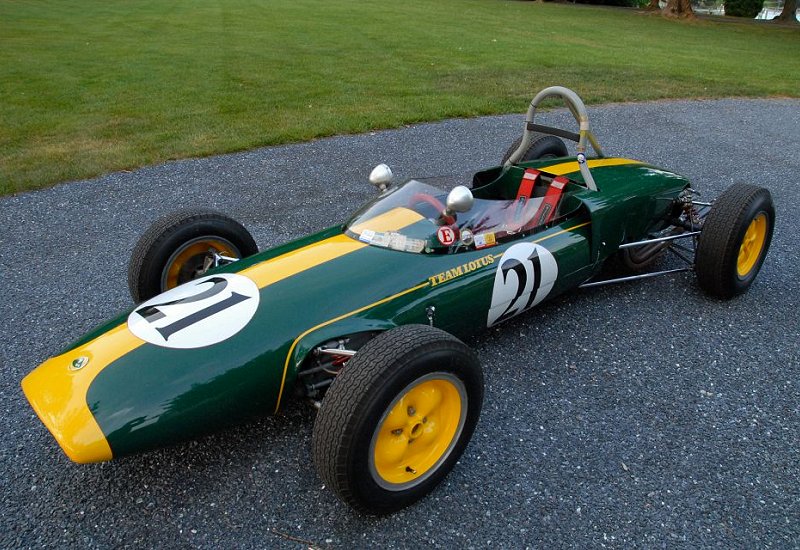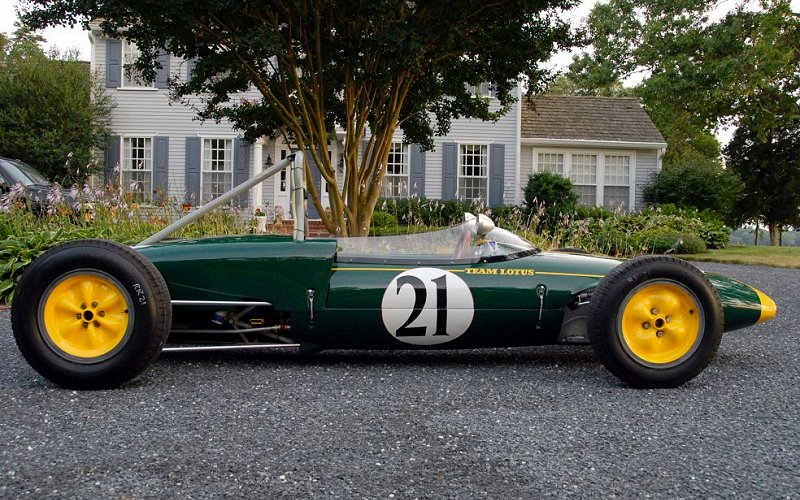Description
The Lotus 20, introduced in 1961, was one of the most successful and technically refined Formula Junior cars of its time. It represented a major step forward from the earlier Lotus 18 in terms of chassis design, aerodynamics, and driver ergonomics, and it quickly became the benchmark in junior single-seater racing. Built to Colin Chapman’s guiding principles of lightness, simplicity, and efficiency, the Lotus 20 combined precision handling with impressive performance, helping launch the careers of numerous drivers who would go on to compete at the highest levels of motorsport.
The Formula Junior category had been created in the late 1950s as an affordable stepping stone to Formula One, and by 1960 it had become fiercely competitive. The Lotus 20 was Chapman’s response to growing competition from Cooper, Lola, and Elva, and it embodied everything he had learned from the mid-engined Lotus 18 Formula One car. Like its predecessor, the Lotus 20 used a welded tubular steel spaceframe chassis, but it was significantly lighter, narrower, and stiffer. Chapman lowered the driver’s seating position and moved the pedals and steering rack further forward, allowing for a much more reclined driving posture that reduced the car’s frontal area and improved aerodynamic efficiency. The result was a lower, sleeker, and more modern-looking racing car with a centre of gravity ideally placed for sharp, predictable handling.
The bodywork, designed by Ron Hickman, was a clean, elegant fibreglass shell with minimal frontal area and smooth airflow over the rear-mounted engine. The Lotus 20’s appearance reflected the growing sophistication of early 1960s race-car design — functional, streamlined, and purposeful. The car weighed just over 400 kilograms ready to race, maintaining Chapman’s obsessive focus on weight reduction and mechanical simplicity.
Power came from small-displacement production-based engines tuned for racing, most commonly the Ford 105E 997 cc inline-four. When fitted with twin Weber carburettors and racing modifications, it produced around 85 to 90 horsepower. Some cars were equipped with the larger 1,098 cc Ford 109E or Cosworth-modified versions for different Formula Junior regulations. The engine was mounted longitudinally behind the driver and paired with a four-speed Hewland or Renault transaxle, delivering power to the rear wheels. Given the car’s low mass, this modest output was enough for outstanding performance — 0–60 mph in around 5 seconds and a top speed exceeding 130 mph on long straights.
Suspension design was one of the Lotus 20’s greatest strengths. At the front, it featured unequal-length double wishbones with coil springs and telescopic dampers, while the rear employed lower wishbones, twin radius arms, and upper links — an evolution of the proven Formula One setup. This gave the car superb balance and responsiveness, with light but incredibly precise steering. The handling was described by drivers as “telepathic,” offering immediate feedback and confidence even at the limit. Drum brakes were fitted all round on early cars, later replaced by front discs as performance and braking technology advanced.
On the track, the Lotus 20 was immediately competitive. It dominated the 1961 and 1962 Formula Junior seasons, often locking out the top positions at international events. The car’s combination of agility, grip, and straight-line speed made it the preferred choice for privateers and factory-supported drivers alike. Many rising stars of the early 1960s, including Peter Arundell and Trevor Taylor, honed their skills behind the wheel of a Lotus 20 before progressing to Formula One.
Lotus also offered the 20 in two variants: the standard Lotus 20 for the 1.0-litre class and the Lotus 20B, introduced in 1962, which incorporated minor chassis reinforcements, revised suspension, and disc brakes on all four wheels. The 20B was even more effective and became a favourite in the later years of the Formula Junior era.
Aesthetically, the Lotus 20 represented a turning point in racing car design. Its low, narrow profile and smooth contours made it appear more modern and aerodynamic than its contemporaries. The long, pointed nose and compact rear bodywork anticipated the look of mid-1960s Formula One cars, and it set the visual and technical template for Lotus’s future single-seaters, including the revolutionary Lotus 25.
Production numbers were relatively small — around 100 cars — but the Lotus 20’s influence was enormous. It dominated Formula Junior grids across Europe, the UK, and the US, and its engineering principles would go on to shape every subsequent Lotus single-seater.
Today, the Lotus 20 is celebrated as one of the purest and most balanced racing cars of the early 1960s. Its blend of simplicity, lightness, and precision handling perfectly captured Colin Chapman’s design philosophy at a time when Lotus was rapidly ascending through the ranks of international motorsport. It remains highly sought after by collectors and historic racers, admired not only for its beauty and performance but also for its role in shaping the modern era of mid-engined single-seater design.
The Lotus 20 was, in essence, the ideal junior racer — light, agile, forgiving, and fast. It bridged the gap between the pioneering Lotus 18 and the revolutionary monocoque Lotus 25, and it stands as one of Chapman’s most elegant demonstrations of how intelligent engineering, rather than sheer power, wins races.

